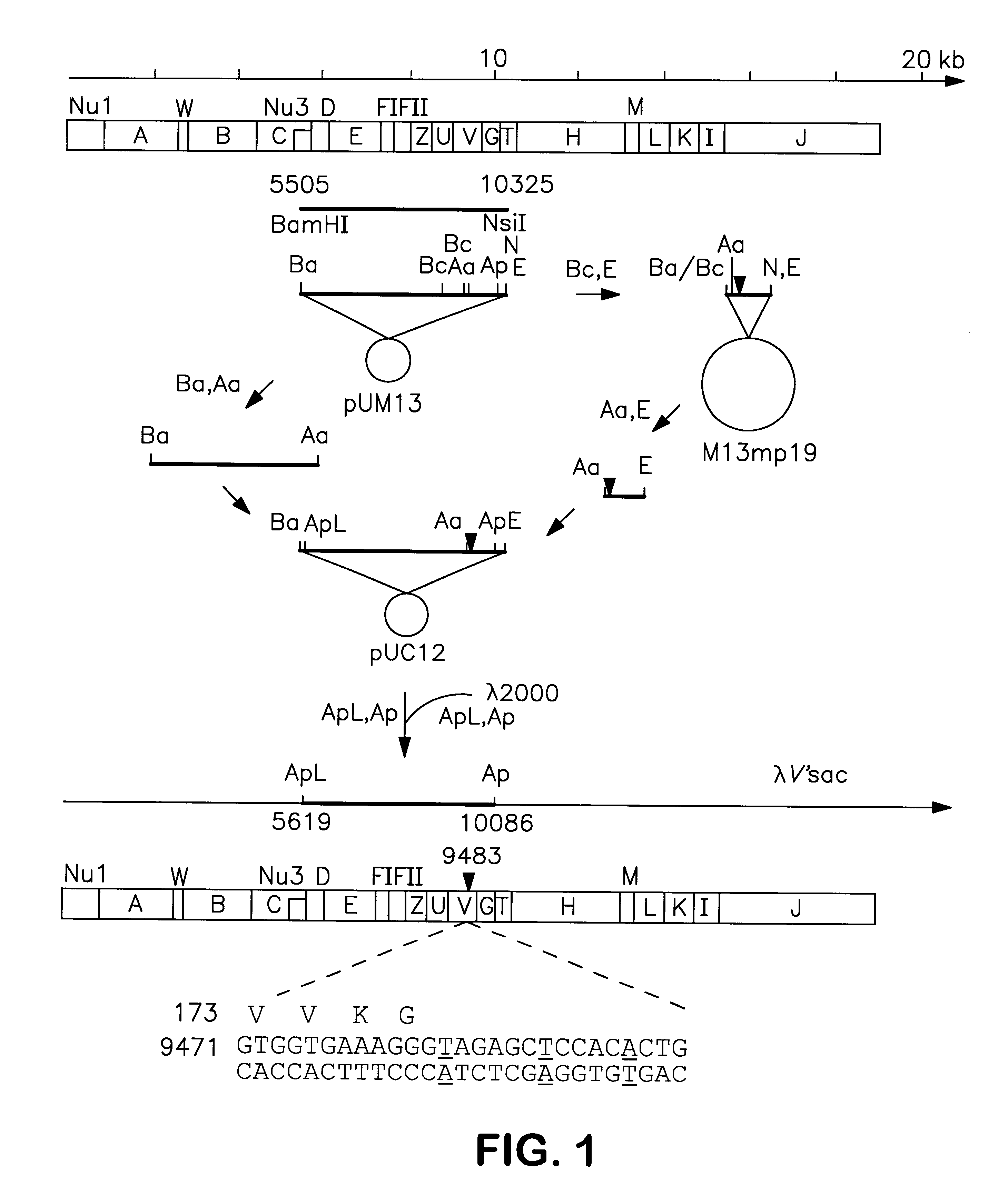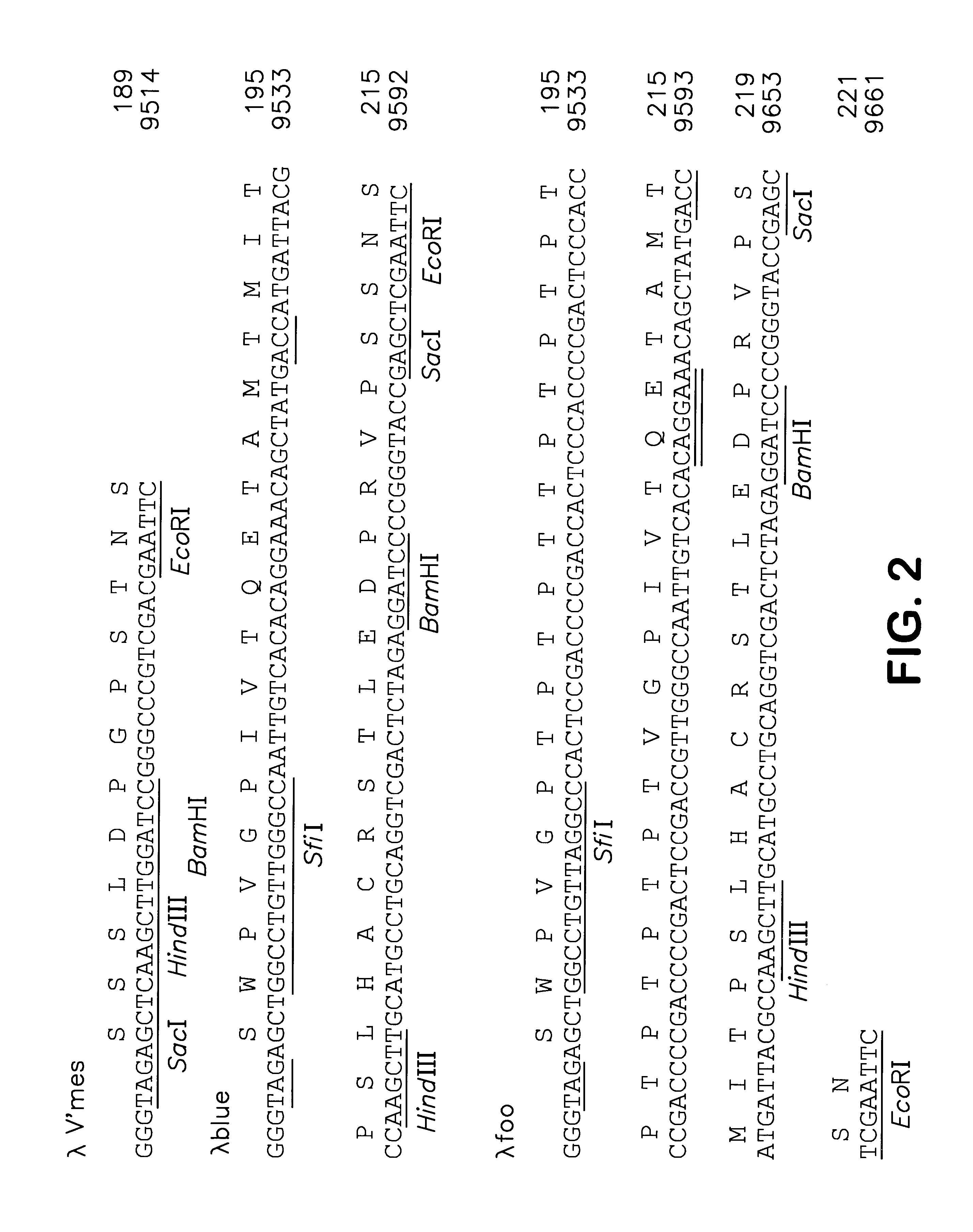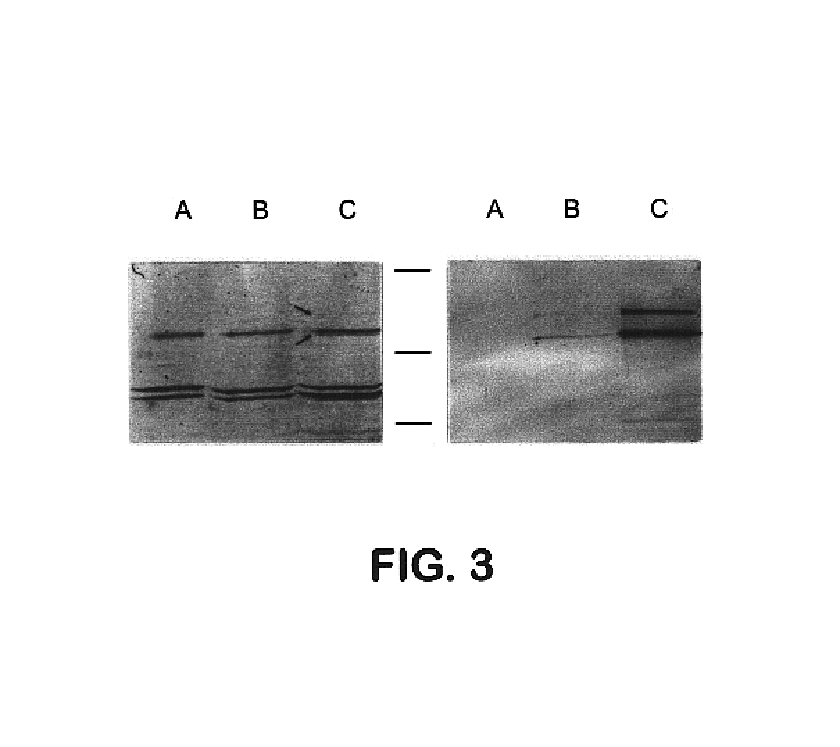Lambdoid bacteriophage vectors for expression of foreign proteins
a technology of bacteriophage vectors and foreign proteins, which is applied in the field of cloning vectors, can solve the problems that the cdna gene products cannot be directly expressed as fusion proteins to the amino-terminus of the viral coat protein, and the use of filamentous phage systems is developed
- Summary
- Abstract
- Description
- Claims
- Application Information
AI Technical Summary
Benefits of technology
Problems solved by technology
Method used
Image
Examples
examples
[0363]The following examples are intended to illustrate, but not limit, the scope of the invention.
L. Construction of a Tricistronic Expression Vector λfoo for Displaying a Protein on the Surface of Lambda Phage Particles
[0364]Expression libraries in bacteriophage M13 have previously been constructed for generating a large number of Fab antibody fragments displayed on the surface of filamentous phage. The displayed Fabs can be screened directly for a desired binding activity. These systems are primarily useful in the surface display of secreted proteins and do not contain design features that provide for the surface display of nonsecreted or cytoplasmic proteins. While these systems provide for the expression of multimeric proteins, two separate cloning steps are required. In addition, these systems do not provide for the expression of multimeric proteins consisting of both the surface display fusion protein and the unfused wild-type protein monomer or monomers. Such expression may ...
PUM
| Property | Measurement | Unit |
|---|---|---|
| molecular mass | aaaaa | aaaaa |
| molecular mass | aaaaa | aaaaa |
| temperature | aaaaa | aaaaa |
Abstract
Description
Claims
Application Information
 Login to View More
Login to View More - R&D
- Intellectual Property
- Life Sciences
- Materials
- Tech Scout
- Unparalleled Data Quality
- Higher Quality Content
- 60% Fewer Hallucinations
Browse by: Latest US Patents, China's latest patents, Technical Efficacy Thesaurus, Application Domain, Technology Topic, Popular Technical Reports.
© 2025 PatSnap. All rights reserved.Legal|Privacy policy|Modern Slavery Act Transparency Statement|Sitemap|About US| Contact US: help@patsnap.com



